
Identify more profitable website traffic and focus your marketing efforts using Segments in Google Analytics.
Google Analytics provides a number of preset Segments that allow account owners to filter or compare traffic reports. Plus, you can build new segments to better interpret your data.
A segment is a subset of your Analytics data. For example, of your entire set of users, one segment might be users from a particular country or city. Segments helps answer questions like “how do mobile visitors perform on the site compared to desktop visitors?” Additional segments can be built, which are handy for tracking marketing campaigns or understanding visitor behaviour. For example, “what do Twitter referrals do vs. Facebook referrals?” Or “what actions do repeat visitors who have visited 10+ pages on the site do after signing up for the newsletter?” The combinations of rules that can be defined for a segment help answer site performance questions related directly to business goals. Segments are handy. Get to know them.
Common uses of the default segments include:
- Viewing a single segment, for example, only Mobile Traffic on the site. When this segment is checked, all reports are filtered to show only what visitors using mobile devices did on the website.
- Comparing two or more segments, for example, Paid Search Traffic vs. Non-Paid Search Traffic. When two or more segments are selected, the reports display only traffic from those segments, making it easier to see how one performed in comparison to the other.
As mentioned additional custom segments can be built, which are handy for tracking marketing campaigns and other business goals.
Common custom segments include:
- Site-specific traffic, such as, traffic only from Twitter. When running promotions in a specific social media channel, or on a particular referring site, a custom segment can be used to filter and track the performance of visitors coming from that site.
- Location-specific traffic, such as, traffic only from a particular city, province/state, country, or even IP address.
- Activity-specific traffic, such as, traffic that visits more than once or traffic that completes a specific goal like Buy or Subscribe.
Custom segments can also include any combinations of and/or statements. i.e., “Twitter and Facebook traffic who complete a petition” OR “visitors who return to the site more than 3 times and visit more than 5 pages.”
Using Segments
In any Standard Reporting screen, there’s a Segments box “Choose segment frm list”. Clicking the box will reveal the default System and Custom Segments panel.
Google Analytics shows “All Users” unless otherwise specified in Segments. To filter reports by segment, check the desired parameters.
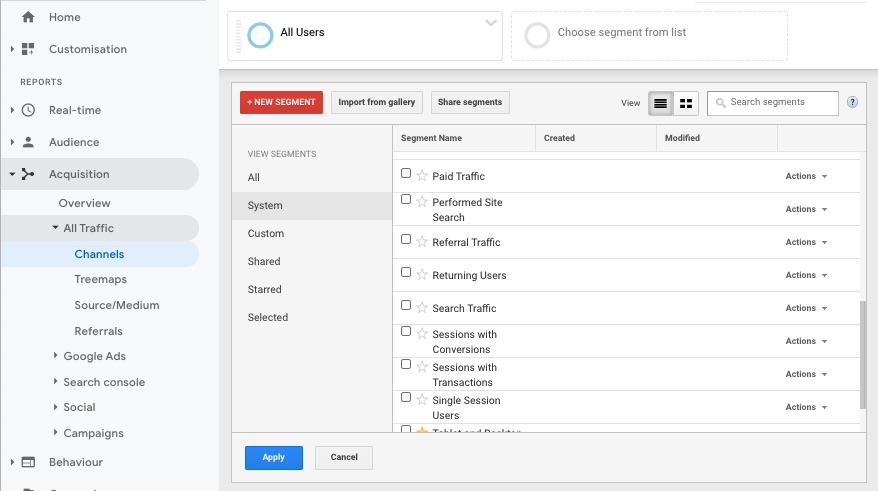
Creating a Custom Segment
Clicking on “New Segment” prompts you to define the rules to build a custom segment.
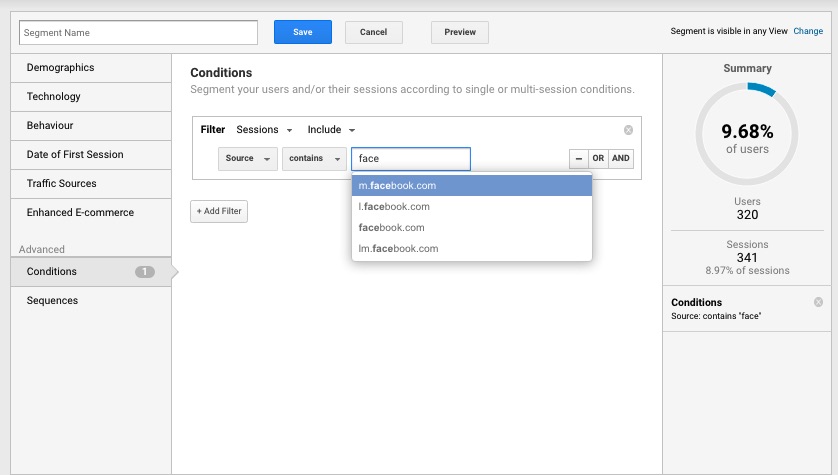
In the Segment Name field, provide a descriptive label for this segment. i.e., Facebook Traffic.
To create the segment for Facebook traffic, choose “Include” traffic from any “Source” that “contains” “Facebook.com.” You can see in the screenshot above how many different URLs will get grouped together.
You can repeat these steps to add additional filters to the segment. For example, using “AND” include traffic from any source that contains Twitter.com would create a Social Media segment that would show aggregated traffic for both sites.
Click Preview to see if you’ve set this up correctly and then click Save.
This will take you back to the report overview, which should now show All Users and your newly created Segment.
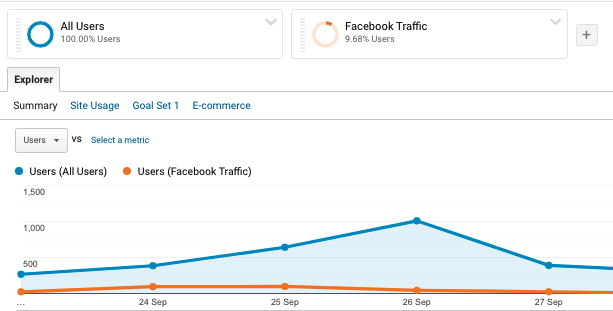
To view a different combination of segments or to remove one from the report view there are two approaches.
1. Click the dropdown arrow on the segment you want to remove.
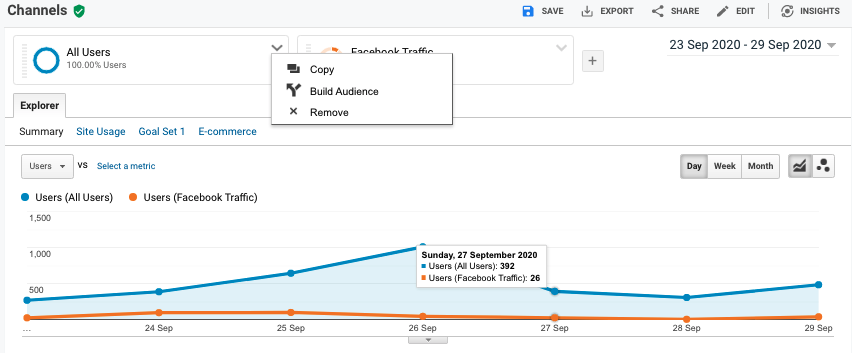
Or…
2. Click the + symbol and check/uncheck the segments you want displayed in reports.
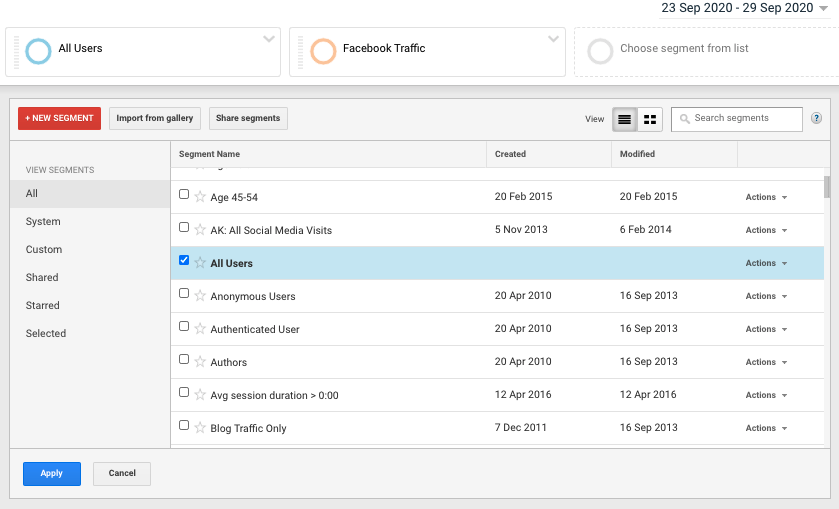
Have a super segment you’d like to share or favourite report? Let us know in the comments.


